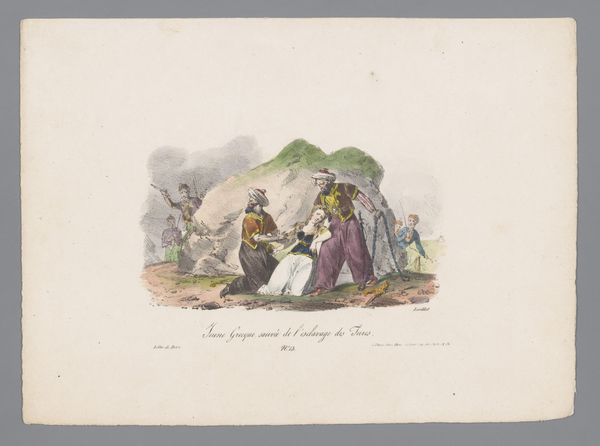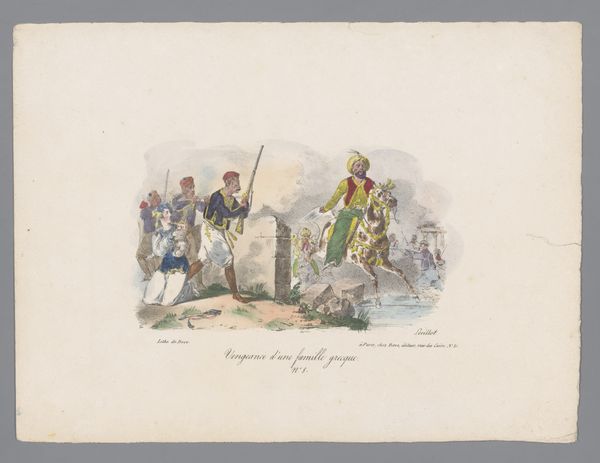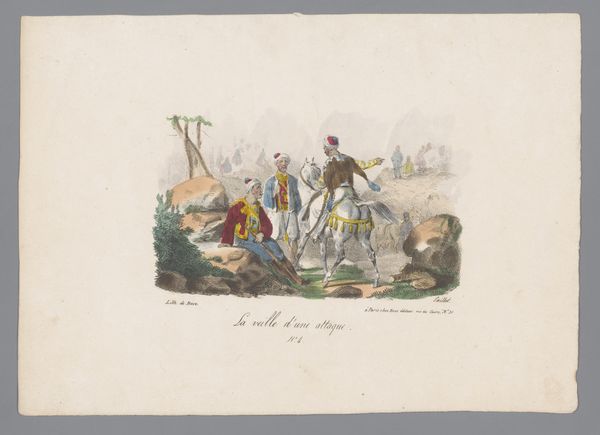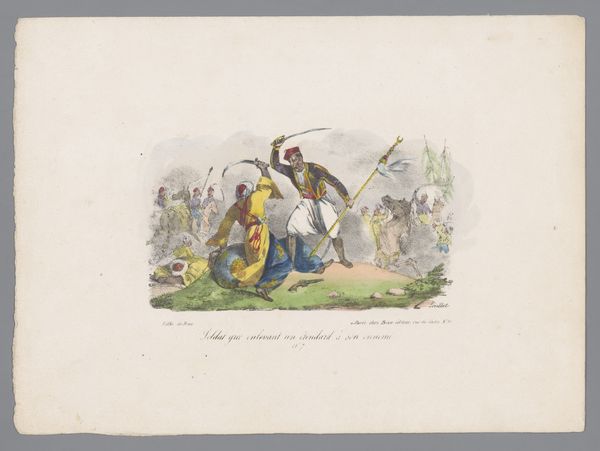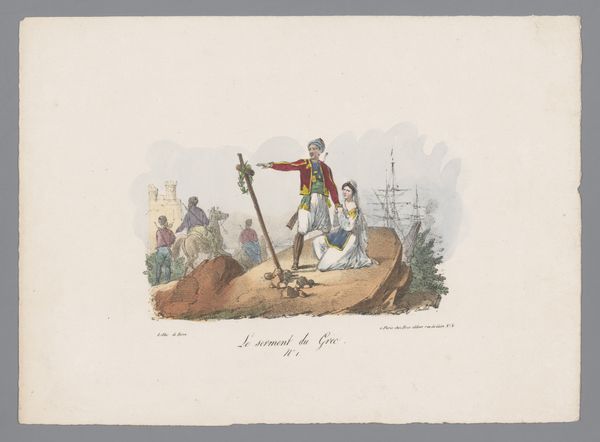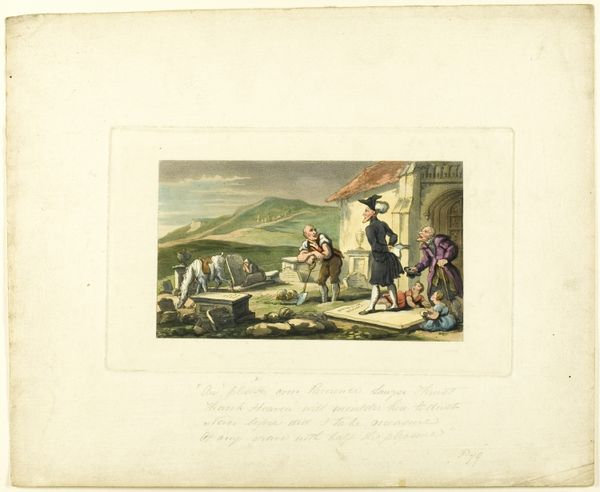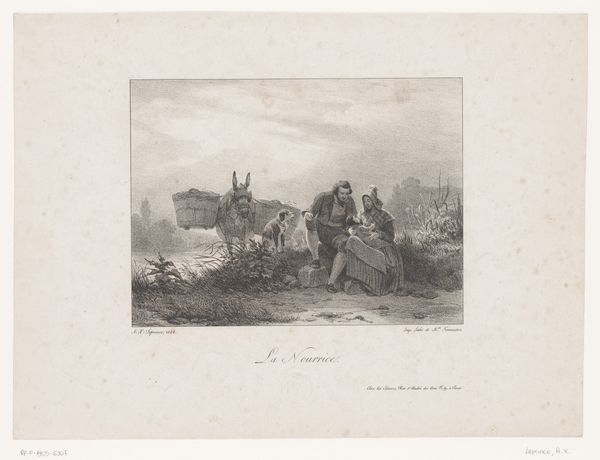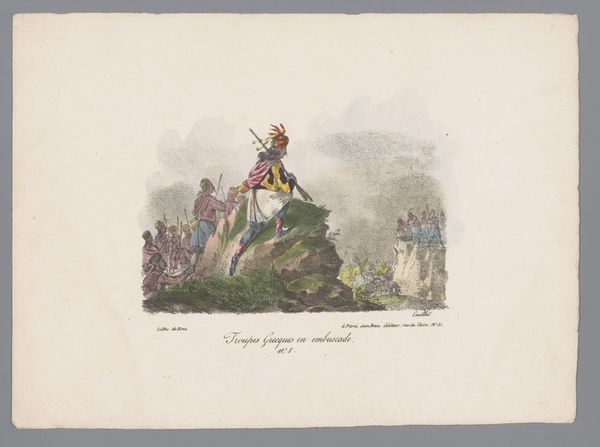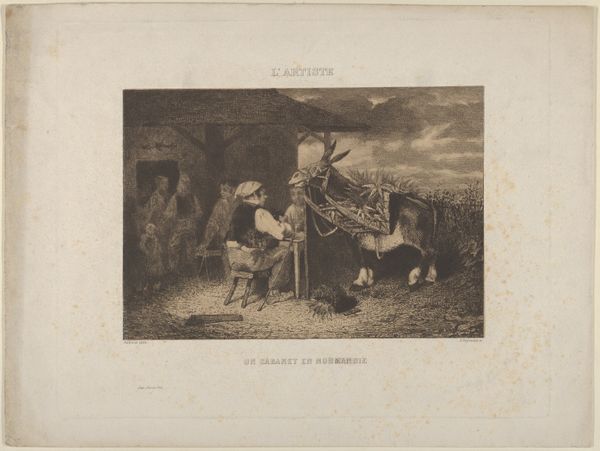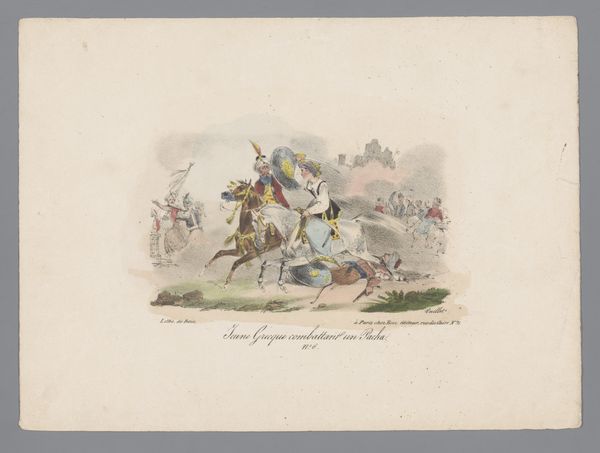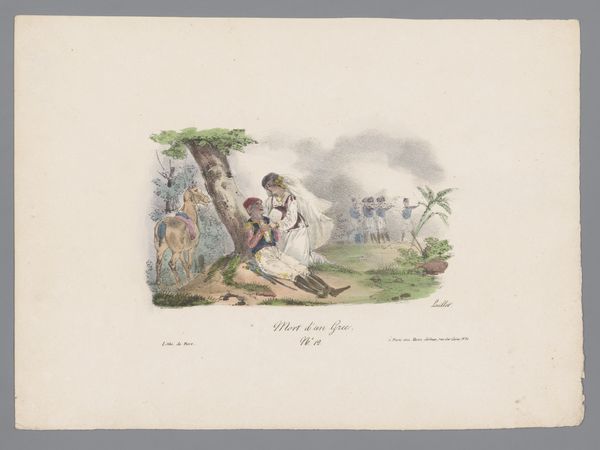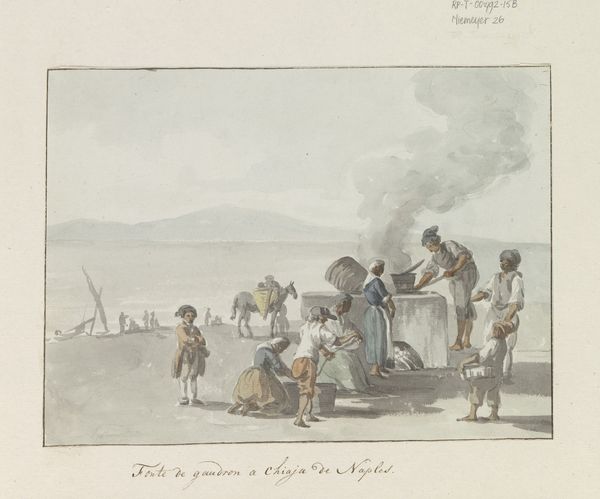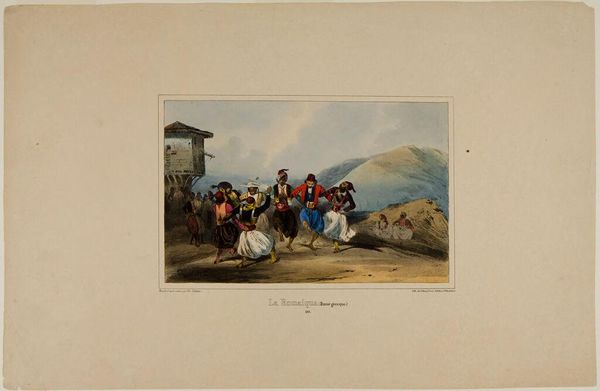
print, watercolor
#
narrative-art
# print
#
watercolor
#
romanticism
#
watercolour bleed
#
watercolour illustration
#
genre-painting
#
history-painting
Dimensions: height 212 mm, width 290 mm
Copyright: Rijks Museum: Open Domain
Editor: Here we have "Greeks Taking a Turkish Ship," made between 1829 and 1835 by Karl Loeillot-Hartwig, rendered in watercolor and print. It’s quite a chaotic scene. What I find striking is the contrast between the almost cartoonish figures and the very real violence being depicted. What's your take? Curator: This print allows us to examine the commodification of conflict through artistic production. How might the production and distribution of images like this – prints designed for wide circulation – contribute to the shaping of public opinion and the romanticization of war, essentially turning suffering into a commodity? Editor: So you are saying the print, as a physical object distributed amongst people, affected culture in the 1830s? Curator: Precisely. It also offers insights into the socio-political climate. Prints were a relatively accessible art form. This artwork can be viewed less as a representation of a historical event and more as a product that embodies a certain ideology linked to national identity and the “heroic” acts undertaken during wartime. Look at the detail. How are labor and skill deployed in the service of national narratives and how does that inform its social context? Editor: That makes me consider the actual labour in its production - both artistic and manual, like moving material around during production. Curator: Exactly. The very process of creation becomes enmeshed within a web of production, dissemination, and ultimately consumption. It compels us to recognize art not just as a window onto history, but as a historical artifact that speaks volumes about the mechanisms of power and cultural exchange. Editor: It’s fascinating how the materials and production methods add another layer to the image’s message. Thank you! Curator: My pleasure. Remember to always consider not only the what but also the how and why of artistic creation.
Comments
No comments
Be the first to comment and join the conversation on the ultimate creative platform.
